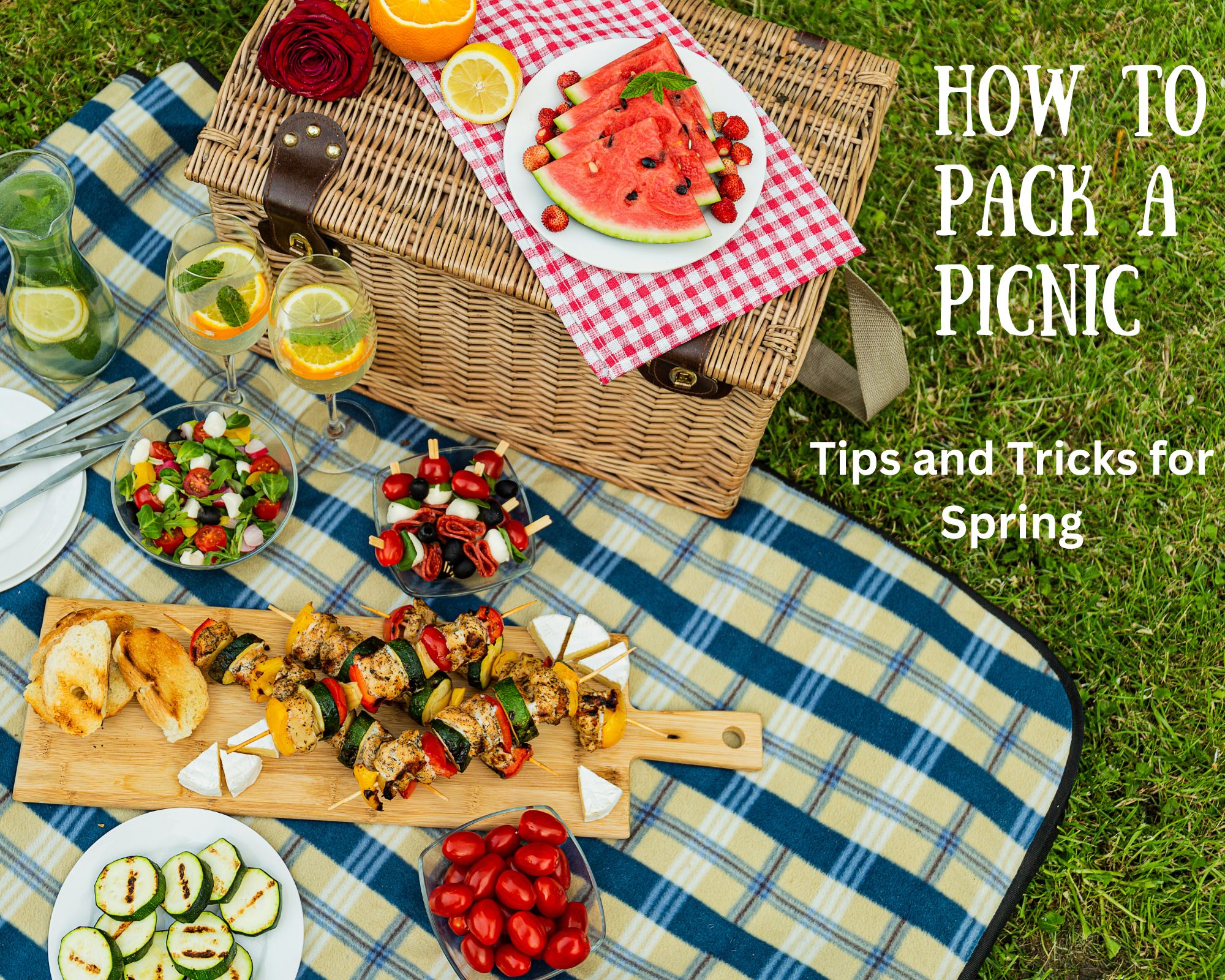You’ll be hard-pressed to find someone who doesn’t like the idea of a picnic. There’s something wonderfully romantic and simultaneously nostalgic about spreading a blanket out on the ground and sharing a meal with your favorite people in the great outdoors.
However, if you’ve ever been present at a bad picnic, you know that crafting this seemingly simple experience is easier said than done. The wrong food, the wrong planning, the wrong gear — it can all make for a bad time for all parties, with the potential for disasters ranging from forgetting the silverware to food poisoning.
So, how do you ensure a perfect picnic experience this spring? Here are a few of our favorite tips, tricks, and hacks, so you can pack your next picnic with ease.
Grab the Right Gear (You Might Buy Less Than You Think!)
A good picnic starts with the right gear. That said, you don’t need to spend tons of money on picnic-specific items. Really, you just need a few crucial things:
– something to sit on
– something to keep your food safe
– something to eat with
– something to hold it all
If you’re going to buy any of these items especially for the picnic, make it the “something to keep your food safe.” Think a cooler or a small lunch bag with freezer pouches, as well as a few small and sturdy containers to hold individual food items.
Otherwise, you may already have everything else at home — a blanket that’s ideal for outdoor use (such as a beach blanket) or that you don’t mind getting a little messy, lightweight cutlery and plates, and a basket or large tote bag to pack everything away.
Plan Your Menu Appropriately
To make things easy, plan your menu around your gear. If you don’t have a cooler or freezer pouches to keep things cold (and safe to eat!), don’t plan to bring perishable foods. If you don’t want to pack portable plates, opt for finger foods and handheld items.
Picnic foods that are nearly always a good idea include charcuterie-style grazing boxes, with hard cheeses, crackers, meats, and fruits arranged in a single, snacking-ready container. You can assemble grazing boxes ahead of time, including all the slicing and arranging, so they’re ready to eat when you are.
While sandwiches are a first thought, consider wraps instead, as a well-made wrap is a little easier to eat with one hand.
A light and refreshing salad is always a nice pick, but wait to add any ingredients that might make your salad soggy (like the dressing), and only add them once you’re ready to eat.
Cold salad side dishes, like a three-bean or a pasta variety, can be prepared well in advance, and pre-portioned ahead of your picnic.
For dessert, look for finger foods or items you can pre-portion, such as cupcakes, mini tartlets, or hand pies.
If you don’t plan on eating your picnic right away, steer clear of foods that don’t hold up well in warm weather, such as salads and sandwiches that contain mayo or eggs.
Pack Your Bag with Purpose
Think about how you’ll eat your food. Maybe you plan on eating a few light items first, then move on to the main event before enjoying dessert. Pack your picnic bag accordingly, with dessert on the bottom and those few light items on top, so you won’t have to dig around in the bag or basket. Place silverware and napkins on top, too, and drinks to the side, so they’re easily reachable. Make sure you’re not accidentally crushing anything in the process (using lightweight and crush-proof food containers instead of bags can help with this).
Don’t forget the extras! Napkins, silverware, serving utensils, salt and pepper, pre-portioned condiments, and a corkscrew or bottle opener are easy to forget, but necessary. You may also want to pack some hand sanitizer or wet wipes as well.
Level Up Your Picnic with Unique Additions
If you’ve not planned or packed many picnics, you may want to start simple and easy with picnic staples, but once you get the hang of crafting an on-the-go dining experience, branch out and make your picnic unique and maybe even a little impressive.
For example, a heavy-duty thermos can keep cold soups cold and warm soups warm, if you want to serve your favorite gazpacho in the spring or stew in the fall. A small investment in a portable backpacking stove means easy cooking at your picnic site, no open fire required (and even if you don’t want to cook something on the spot, they’re still a great option if you want to brew coffee or tea).
You can also theme your food (or the picnic as a whole) around foods from a certain location or era.
You may also want to consider your picnic experience beyond just the food, and begin packing games, a portable speaker for music, and other activities or items to make the outing even more fun.
